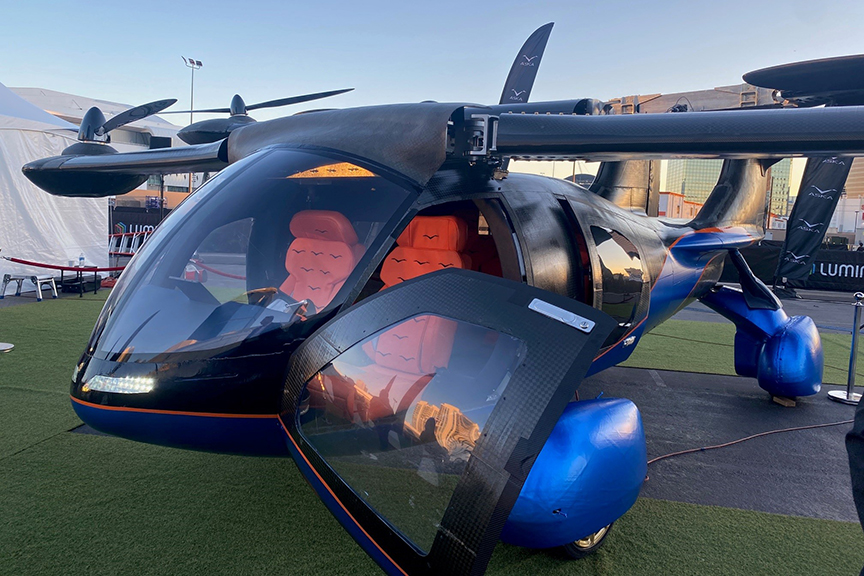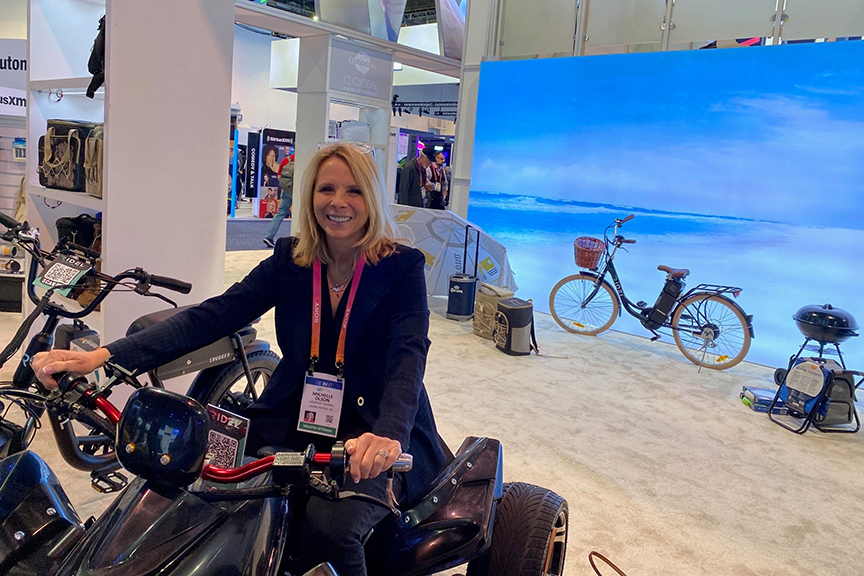By Michelle Olson, APR, CEO
CES 2023 is a wrap and the headline is, “CES IS BACK.” The crowds were there, the cool gadgets were there, and all the energy of pre-pandemic CES was in full swing. More than 115,000 registrants, 3,200 exhibitors and 2,000+ media spent the week burning the soles off their shoes and blowing past their wearables’ step goals.
CES was once known as the place to roll out new TVs, cell phones, cameras and other personal electronics. But for several years now, the air and ground mobility sectors have been gravitating to Las Vegas to launch the latest mobility technologies. And mobility thought leaders have been convening to discuss and explore how we’ll move people, data and goods in the future. CES has become the nexus of mobility and technology, and auto and aviation shows around the globe should study its impact. They may very well be “also-rans” rather than the center of what’s next in their industries.
The Metaverse may have dominated news headlines, but mobility-related activities shared the CES spotlight, with the CEOs of Stellantis, BMW and John Deere kicking off the week with prime time and late-night keynote events. The Aerospace Industries Association conducted a CEO-level air mobility panel and hosted a “Future of Flight & Exploration” reception. Women and Drones held its annual summit and awards program. Sony debuted its first electric vehicle. And the most exciting (in our opinion) and crowd-pleasing demos were of autonomous and connected vehicles, electric autos, trucks and motorcycles, an actual “flying car” and an ultralight eVTOL personal rotorcraft the CEO called a “flying ATV.”

Lambert and its partners, 9th Wonder and Robert Hastings & Associates, hosted a salon dinner to explore mobility’s migration into a tech show and gauge what’s next for the industry. Participants included thought leaders from air and ground mobility companies, automotive and aviation manufacturers, mobility technology providers, drone experts, marketers, communicators, automotive analysts and journalists. While we could write a blog series about all we discussed, a few insights stand out:
- CES has always been a place where disruptors can make their mark, where the vision of next-gen technology is brought to life. While mobility has always been tech, it is now high-tech. The auto/mobility and advanced air mobility industries are centering efforts on CES because it connects them with innovators from other sectors and inspires what’s to come.
- The large audience, media attention and presence of government representatives provides a channel toward faster and broader public acceptance of these often-disruptive technologies that once seemed unachievable. Think George Jetson.
- The key to these new mobility technologies is electrification, connectivity and artificial intelligence (AI), linking it to consumer tech. There is still serious concern about whether the world’s electric grids can sustain these new electric platforms, but that also is being studied and addressed.
- Drones are growing in acceptance and utilization, and we’ll soon see a proliferation of drones as more use cases develop. Robots are already delivering pizzas.
- AI is here to stay and affecting every facet of the mobility industry (and all industries, frankly).


CES is no longer a show of the future, but a show of what’s now. Today. The technologies on display at CES are just some that will significantly transform how we live and move in our lifetimes. While they mature, regulatory agencies are racing to get on board and Smart Cities are working to adapt. We can’t wait to see what next year’s show unveils.

